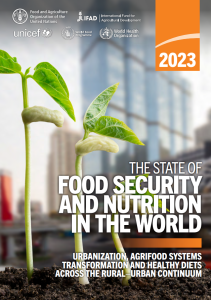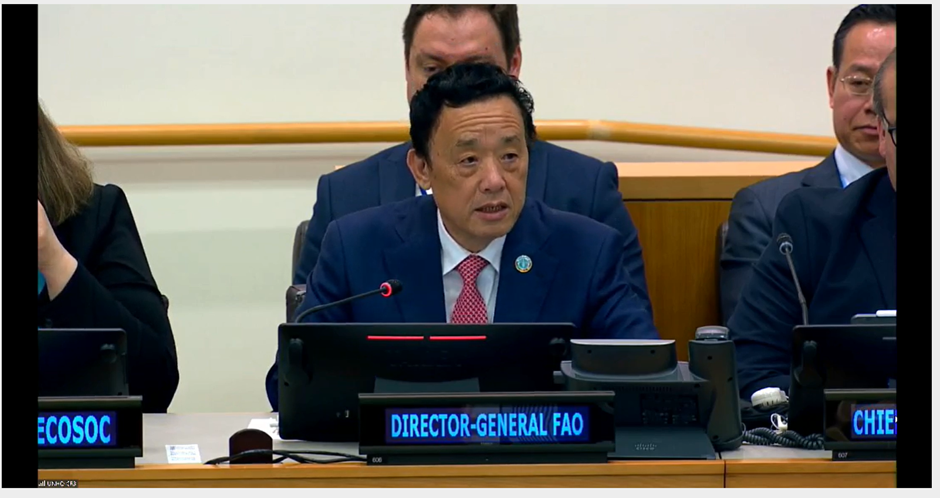On 13 May 2023, the FAO together with IFAD, UNICEF, WFP, and WHO published one of its annual flagship reports: the state of food security and nutrition in the world 2023. This year’s edition focused on urbanisation, agrifood systems transformation, and healthy diets across the rural–urban continuum. Every year, the FAO carries out a study evaluating populations’ access to food, looking at both the quantity and quality of food products.
The findings are sobering: in terms of hunger, the world has made no significant progress last year. 735 million people face undernourishment in 2023, which amounts to 122 million more than in 2019, before the pandemic. Worldwide, roughly 29% of children under five suffer from wasting or stunting.
Not everyone is as likely to be affected by malnutrition. Except for Europe and North America, people in rural areas are more vulnerable to undernourishment. While food in urban centres may be cheaper, there is a risk of a decrease in the quality of available food, with an increase in ultra-processed food and excessively fat and sweet products. Making a healthy diet available in cities will be a key challenge for the next decades, with almost seven in ten people projected to live in cities by 2050. At a global level, food insecurity also disproportionately affects women, with a gender gap of 2.8 percentage points regarding food insecurity.
The report concludes by advising governments to invest in research and projects favouring a healthy food environment and “increasing the availability and affordability of nutritious foods”. The FAO highlights the importance of effective governance involving subnational authorities in ensuring policy coherence, reducing the cost of healthy diets and tackling food insecurity.
To read the full report, click here.




